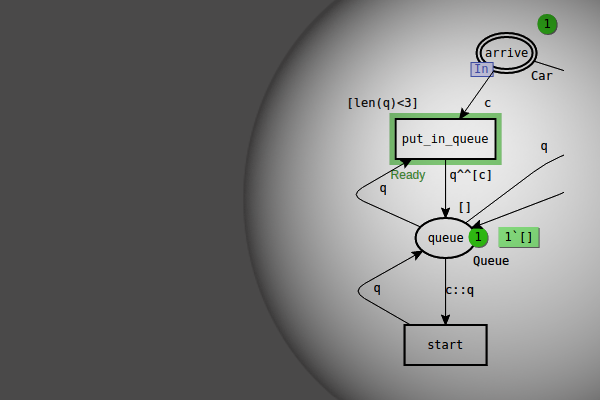A number of functions are predefined for all timed color sets. In the following, we assume that the color set cs has been declared as a timed color set. Functions for the untimed version of the color set (which is always automatically defined in addition to the timed version) are described on the help page for color set functions.
Equality Operators
The equality operators = and <> are defined for all timed color sets, while <, >, <= and >= are not defined for timed color sets. To test the order of the elements in timed color sets, use the lt function, which is described below.
Functions for all timed color sets
Note that while the color set cs has been declared as a timed color set, the names of the following functions have the prefix cs'timed.
cs'timed.lt(c1@ts1,c2@ts2): returns true ifcs.lt(c1,c2), or if (c1=c2andModelTime.lt(ts2,ts1)) (note that a big time stamp is less than a small time stamp), otherwise returns falsecs'timed.legal(v@ts): test whether valuevis a member of the (untimed) color setcs.vmust be a member of either the color setcs, an alias color set forcsor a superset color set ofcscs'timed.mkstr(c@ts): make string representation of a timed color, i.e. colorcwith time stamptscs'timed.mkstr_ms(tms): make string representation of a timed multi-setcs'timed.input(s): read a timed color, i.e. a color and a time stamp, from input streamscs'timed.input_ms(s): read a timed multi-set from input streamscs'timed.output(s,c@ts): write colorcwith time stampts, to output streamscs'timed.output_ms(s,tms): write timed multi-settmsto output streams

You must be logged in to post a comment.